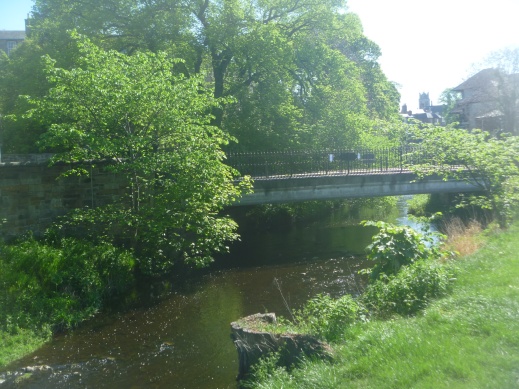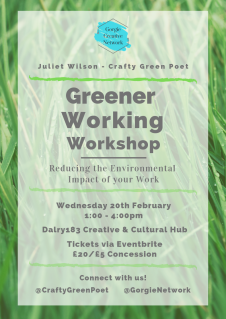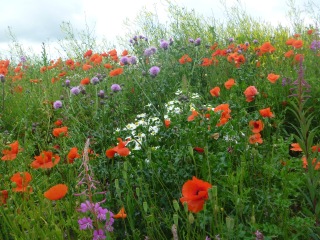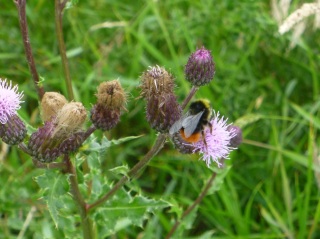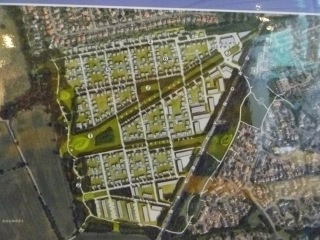This is a summary of a talk I gave today to the Information Officers Support Group meeting in Edinburgh.
This talk focuses on the environmental issues around information work, reducing our environmental impact and communicating environmental issues in our work.
Environmental issues are among the most pressing issues of our time and crucially we can do something about it and often save money at the same time.
Some things to note:
Environmental impact is about more than carbon footprint.
We need to balance environmental impact with other issues such as accessibility.
We need to look beneath the surface of our preconceptions about environmental impact (eg e-communications vs paper is more complicated than just wanting to save paper).
1. Areas where we can reduce the environmental impact of our work:
paper use (eg print on both sides, use paper printed on one side as scrap to make notes, use recycled paper, smaller print size for internal documents (if this suits everyone); don’t print out emails, use email and electronic systems to circulate documents rather than paper)
environmentally friendly paper, ink etc
energy efficiency of printers etc
repair rather than buy new wherever possible
printing companies and publishers – choose a company that offers environmentally aware printing and balance this with locality – local company means less travel and also supports local economy
travel – reduce and instead use video-conferencing, teleconferencing, skype. Travel by public transport where possible, car-share and use low carbon driving techniques when you need to drive
buy 2nd hand office furniture
waste disposal – recycle where possible. Can you re-use some of your wastes? Ask council about recycling items that are currently not possible to recycle
Encourage employees to walk, cycle or use public transport to get to work. Encourage working from home
refreshments – buy organic where possible, compost foot waste
office heating and lighting – move towards efficient systems
efficient use of office space
2. The role of the information officer in communicating on environmental issues in the organisation
highlight the environmental aspect of issues the organisation deals with,
championing environmental issues and environmentally friendly operations within the organisation, eg putting up posters and stickers reminding people about environmentally friendly behaviour (eg poster in kitchen about using only as much water as needed in kettle and composting food waste). Get your organisation involved with Big Energy Week and Green Office Week.
Need to get management on board.
3. Balance carbon footprint with accessibility of communications
Not everyone is able to / happy to use email or the internet and a lot of people can’t read long documents comfortably on screen. Therefore, in terms of communicating with supporters, these forms of communication need to be additional to paper communications, not (certainly in the short term) to replace them.
small print squashed close will save paper but is difficult to read
Plain English is language that is considered to be readable, it often involves using fewer, shorter words and so can save paper on long documents as well as being a good thing in itself.
4. Advantages and disadvantages of e-communications
Electronic sources can be just as effective than paper-based ones (eg: job promotions via online sources and social media, vs newspaper adverts) and can be used to save paper and save money.
Video conferencing and tele-conferencing can reduce the need to travel (so reducing carbon footprint) are more time effective (allowing you more time for other tasks) and reduce costs (once the conferencing equipment is in place).
Laptops are much more energy efficient than desk top computers.
There is a huge issue around embedded carbon (and conflict minerals) in computers and e-readers.
Taking e-readers as an example:
a) Measuring the carbon footprint
At the consumer end this is relatively easy, staistics vary but you need to read up to 100 books on an e-reader to reduce its carbon footprint to below that of buying new paperback books. So, if you read a lot you can reduce your carbon footprint by buying an e-reader as long as you don’t upgrade it too often. The paper books used in comparisons are usually new books made with paper from virgin pulp. Publishers are slowly moving towards using more recycled paper in their books, which reduces the environmental impact of new books. And if you read library books or buy second hand books then you are reusing books – which has a lower carbon footprint than using an e-reader.
b) Production methods
E-readers, computers and mobile phones contain coltan – a controversial mineral that is linked to environmental and social injustices including fuelling conflict in the Congo.
c) E-waste
Tonnes of computers, mobile phones and (in the near future, e-readers) are discarded every year, filling large landfill sites often in the developing world where thousands of people are employed to extract the valuable minerals with great hazards to their health. Yes this is recycling, but with unacceptable side effects.
5. The economics
Reducing the carbon footprint of information work can save money (though not always) as you will use less resources though some of those resources may be more expensive (for example you may reduce the amount of paper you use but sometimes recycled paper is more expensive).
6. What to do
Evaluate the carbon footprint of your information work
Highlight areas for improvement
Choose areas you can make a difference
Start with small and achievable goals
7. Resources
a) Websites
FoE Green Office guide including green office audit http://green-office.org.uk/audit.php?goingto=audit0
Resource Efficient Scotland http://www.resourceefficientscotland.com/
Energy Saving Trust Scotland http://www.energysavingtrust.org.uk/scotland
WWF Best Practice website http://www.en.bestpractices.wwf.fi/en includes case studies of best environmental practice in a range of areas (including communication).
Wrap Business Resource Efficiency Hub http://www.wrap.org.uk/content/business-resource-efficiency-hub
Green Office Greening Guide http://www.thegreenoffice.com/index.php/go-green
Changeworks http://www.changeworks.org.uk/what-we-do helps voluntary, public and private sector organisations to reduce their carbon footprint and manage their recycling
Eco-libris can help reduce your carbon footprint if you work in publishing
http://www.ecolibris.net/how.asp
online carbon footprint calculators eg http://www.thegreenoffice.com/carboncalculator/calculator/ or https://carbonfund.org/business-calculator
Plain English Campaign http://www.plainenglish.co.uk
Everyclick http://www.everyclick.com ethical search engine raising money for charities
List of environmentally friendly search engines http://webecoist.momtastic.com/2008/08/20/list-of-green-and-eco-friendly-search-engines/
Big Energy Week http://www.energysavingtrust.org.uk/BESW2015
Green Office Week http://www.avery.co.uk/avery/en_gb/Projects-&-Ideas/Ideas-for-Work/GOW/Green-Office-Week-Home.htm
low carbon driving techniques http://www.theaa.com/motoring_advice/fuels-and-environment/drive-smart.html
b) Articles
Wikipedia definition of carbon footprint https://en.wikipedia.org/wiki/Carbon_footprint
The internet has a large carbon footprint http://www.theguardian.com/environment/2010/aug/12/carbon-footprint-internet
Green computer use http://www.iolo.com/resources/articles/eco-friendly-tips-for-your-computer/?AID=11236899&PID=3862109&utm_source=cj
c) Conflict Minerals
When Elephants Fight http://whenelephantsfightmovie.com/
Blood in the Mobile https://en.wikipedia.org/wiki/Blood_in_the_Mobile
Fair Phone makes phones free from conflict minerals http://www.fairphone.com
